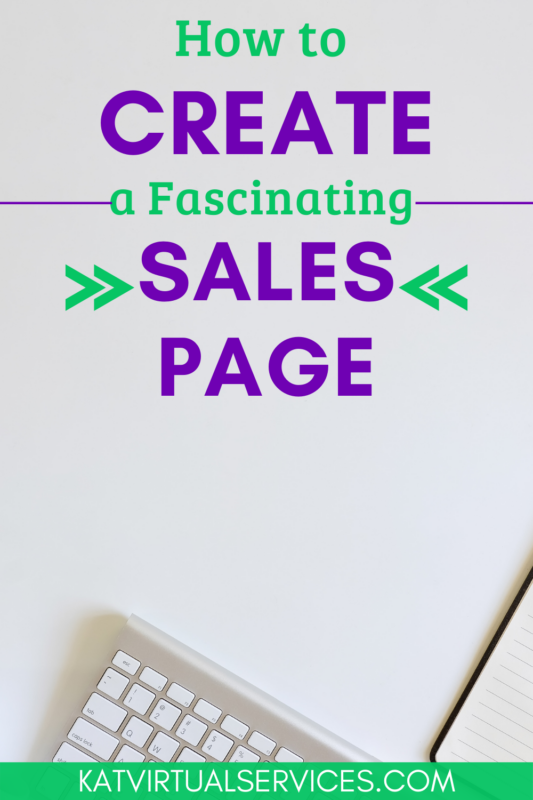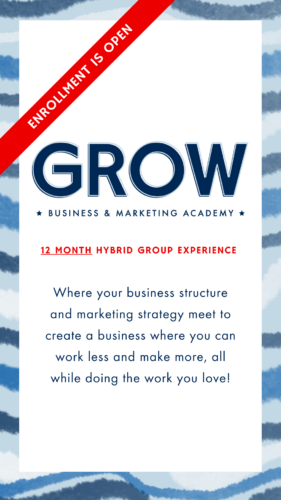A Great Sales Page is a Must.
- A great sales page is an absolutely essential part of any sales funnel. The sales/landing page is what ultimately leads a person to open up their wallet, take out their credit card, and buy from you.
- If you have a mediocre sales page, you simply won’t make many sales.
- A great sales page, on the other hand, causes your sales to skyrocket, dramatically increases your conversion rate, and turns leads into paying customers.
Note: A sales page is also called a landing page.
- Of course, all this raises a critical question: how do you create a great landing page? If you’re new to writing landing pages, it can seem kind of overwhelming. How do you communicate everything you need to in order to make the sale?
- You can learn to create a great sales page. Every good sales page contains the same core elements. Sort of like a math equation. Once you learn what these core elements are and how they work, you can put them together to create a highly effective sales page.
- In this blog post, you’ll discover the secrets of creating a great sales page. I’ll reveal time-tested formulas and strategies that are guaranteed to increase sales and conversions.
Step #1: Understand Your Audience
- Before you begin writing any elements of your sales page, it’s absolutely critical that you understand your audience. You need to be able to talk directly to your audience in a language that resonates with them.
- Until you’ve taken the time to do a deep dive into your audience to understand what makes them tick, you can’t get to work on your sales page.
- Once you know your audience, you can craft your sales page so that it connects on a deep, personal level with them.
- Here are some simple questions to help you define your audience:
- What age are your primary customers?
- Are they primarily male, female, non-binary or a mix?
- What are their biggest pain points and challenges?
- What motivates them?
- What do they aspire to?
- What are their goals, hopes, and dreams?
- What do they fear?
- What have they tried in the past that hasn’t worked?
- What objections do they have to purchasing from you?
- What makes them happy?
- Who are their biggest influences?
- What websites do they frequent?
- Who do they follow on social media?
- The end result will be a buyer persona. A buyer persona is a representation of your ideal customer. Your sales page should be written so that it speaks in ways that are familiar to your buyer persona. It’s okay if you end up with multiple customer personas. The key is that you know exactly who you’re selling to.
Step #2: Craft Your Headline
- It’s hard to overstate the importance of a landing page headline. The headline catches people’s attention and draws them into the rest of your sales page.
- A boring headline will result in people quickly leaving your sales page, uninterested by what you have to offer.
- A good headline will immediately intrigue your readers, catching their interest, and making them want to read more.
- In order to create a compelling headline, you must know your Unique Selling Proposition (USP). Your USP is what you uniquely have to offer your customers. Your USP makes you different from any competition and helps potential customers immediately understand what you have to offer them.
- Here’s a simple formula for determining your USP: I help [PERSON] to [SPECIFIC RESULTS] by [YOUR SOLUTION].
- Your sales page headline will flow out of your USP and be tailored specifically to the product or service you’re selling. Your headline should:
- Identify the specific problem your product or service solves
- State the big benefit
- Trigger emotion in the reader
- Intrigue the reader
- Convince the reader to check out the rest of the sales page
- Just be sure that your headline is specific, interesting, and speaks to the problem. Remember, your headline will convince people to read the rest of the sales page.

Step #3: Address Core Problems and Frustrations
- Now it’s time to start writing the actual copy of your landing page. The first thing to do is to highlight the pain points that your potential customers are already feeling. You want them to know that you understand where they’re coming from. That you can relate to their struggles.
- Be specific when highlighting the pain points. Use language that they use to describe the problems.
- Get the reader to think about how difficult and frustrating things currently are for them. Think of it like you’re creating a “Before/After” scenario. In the “Before” scenario, you’re painting a picture of what their life is currently like.
- When writing this section, go into as much detail as possible. Use vivid language and try to paint a picture. You want the reader to actively feel their pain points as you describe them. You want them to feel like you’re talking directly to them.
Step #4: Introduce Your Solution
- This is when you tell potential customers about the product or service you offer. You’ve spent a lot of time talking about their specific pain points and struggles. Now you offer your product or service as the perfect remedy to their problems.
- When talking about your solution, start by talking about the benefits. Talk about how your product or service will absolutely change the lives of your potential customers.
- The truth is that people are primarily interested in the outcome rather than your exact product or service. They care the most about how their life will change, not the exact methods you will use to change it.
- Your primary goal is to show potential customers just how fantastic their life will be if they adopt your solution.You want them to be convinced that your product or service is exactly what they need to solve their problems.
- Once you’ve spent a significant amount of time talking about the benefits of your solution, then you can go into specific details about the features. For example, maybe you offer done-for-you content creation. Or maybe part of your solution is three consulting calls.
- When talking about the features of your product or service, your goal is to help the reader become an informed buyer. Remember, they can’t physically touch or see the product or service on your sales page.
Step #5: Make Your Offer
- Now it’s time to actually make your offer. It’s time to directly invite the reader to purchase from you or secure your services. This will come in the form of a direct call-to-action. Many times, it’s good to put the CTA in the first person. This emphasizes to the potential customer that they’re the ones taking action.
- You don’t want your CTA to be weak, boring, or uninspired. You want the reader of your sales page to feel like they’re doing something big and important when they click on your CTA.
- Don’t beat around the bush with your CTA. Make it direct and to the point. Make it clear that you want the potential customer to actually do something.
Step #6: Introduce Yourself
- If people are going to purchase from you, they need to know who you are. Tell potential customers about who you are, why you’re uniquely qualified to solve their problems, and why they should trust you.
- In this section, consider including things like:
- A high-resolution photo of yourself
- Your experience
- Successes you’ve had
- High-profile clients you’ve worked with
- Degrees or certifications you hold
- Media appearances
- Avoid being modest when writing this section. Make it clear that you’re an expert in your field and that you have the necessary experience to solve the problems they’re facing. Think of this section as an abbreviated resume. Show off your knowledge and experience so that your prospects trust you.
Step #7: Use Testimonials
- On your sales page, use testimonials from satisfied customers. They’re especially helpful in overcoming objections and doubts. They feel authentic and prove that you’ve actually helped people. Testimonials back up the claims you make in your sales page and prove that your product or service actually works.
- Here are some specific questions you can ask customers to get powerful testimonials:
- What were you struggling with before you used my product or service?
- What specific results did you see as a result of using my product or service?
- Why would you recommend my product or service to others?
- What specific features of my product or service did you like?
- The best testimonials are very specific in the details. For example, a testimonial that says, “This is a great product!” is good. A testimonial that says, “This product improved our conversion rate by 11%!” is much better.

Step #8: Filter Out The Wrong People
- Ideally, your sales page should filter out those who aren’t a good fit for your offer. If the wrong people sign up for your offer, they become dissatisfied customers. Also, you only want to work with those who you can effectively serve.
- If the wrong people sign up for your offer, you’ll both become frustrated when you discover that you’re not a good fit for each other.
- So how do you filter out the wrong people? By telling readers exactly who your offer is right for. What characterizes your ideal customer? Are you targeting small business owners that make over $100,000 year? Or executives who are struggling to keep up with the demands of their job?
- Be very specific when it comes to defining who your offer is for. The more specific you can be, the more you’ll attract your perfect customer and turn away those who aren’t a great fit.
Step #9: Answer Frequently Asked Questions
- Your potential customers will undoubtedly have questions as they read your sales page. The more you can directly answer their questions, the more you’ll overcome their objections, and the more likely it is that they’ll buy from you.
- Here are some common questions you may encounter:
- Are there any prerequisites?
- Do you offer a payment plan?
- How long does it normally take to see results?
- Is any special equipment needed?
- How do people receive your product?
- How long do they have access to your product?
- What payment types do you accept?
- Try to put yourself in the shoes of those reading your sales page. What do you want to know before you purchase a product or service like yours? What would hold you back from buying?
- It’s really important to be as thorough as possible when creating your FAQ section. Unanswered questions keep people from buying. They are an obstacle to sales. Also, put your contact information on your sales page so that people can follow up with you if they have further questions.
Step #10: Add Urgency
- Add a sense of urgency to your sales page. You want the reader to feel like if they don’t take action right away, they’ll miss out on a great opportunity.
- Additionally, adding urgency to your sales page forces people to make a decision. They can’t indefinitely put off purchasing. They need to decide whether they’re in or out.
- So how do you add urgency to your page?
- Offer your product or service for a limited time.
- Only take on a limited number of clients.
- Offer bonuses that expire after a set time.
- Limit the number of products you sell.
- When adding urgency, it’s really important that you stick to your promises. If you say you’re only taking on 10 new clients, don’t keep taking on new clients after 10. People will stop believing you if they find out that you created artificial urgency.
Step #11: Reiterate the Benefits and Offer
- Repeat the benefits and encourage action. When reiterating the benefits, help them imagine how their lives will change for the better if they adopt your product or service. Encourage them to decide whether they want things to remain as they are or whether they’re ready for a positive change.
- After you’ve reiterated the benefits, make a final call-to-action. You again want to tell the reader to take action. If they’ve read this far in your sales page, it probably means they’re interested in what you have to offer. But they haven’t yet responded to your call-to-action.
- Like with your previous call-to-action, be direct and to the point. Don’t beat around the bush. Make it very clear and obvious what you want the reader to do. If you’re using a button for your call-to-action, make the button big and obvious.

The Importance of Subheadings
and Scannable Copy
- Your sales page should be easy to read – so much so that a person could skim through it and get a good feel for your offer. So how do you make your sales page easily readable? By using plenty of subheadings, paragraph breaks, and bullet points.
- A good rule of thumb is that every new section in your sales page should have its own subheading. When writing your subheadings, follow the same rules as when writing your overall headline. Each subheading should be interesting and keep the reader moving down the page.
- Within each section, ensure that the copy itself is easy to skim. Use short paragraphs. Every few sentences, start a new paragraph. This allows a person to quickly move down the page and get a good feel for what you’re saying.
- After you’ve written a complete draft of your sales page, quickly skim through it yourself. Is it easy on the eyes? Can most of the information be taken in at a brief glance? Are there any areas where you’re forced to slow down in order to understand the content?

